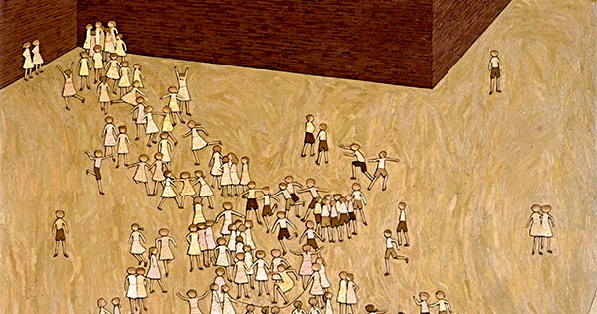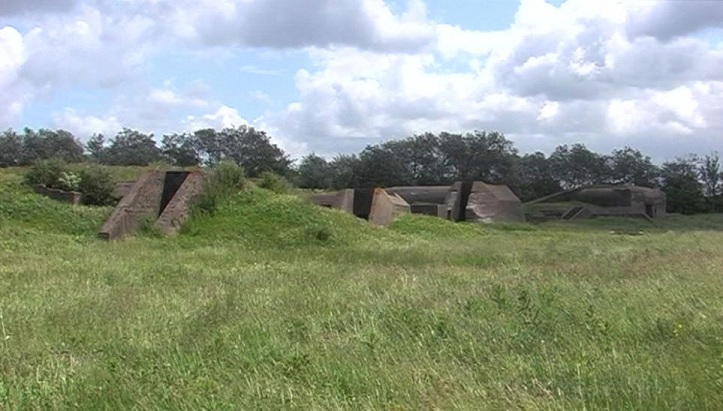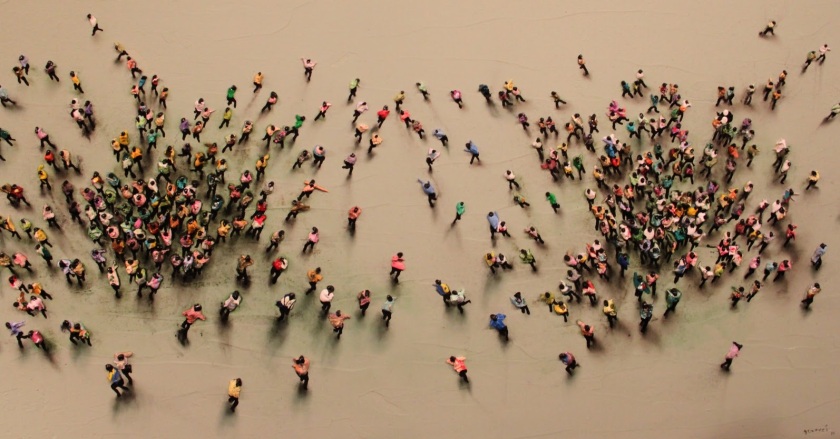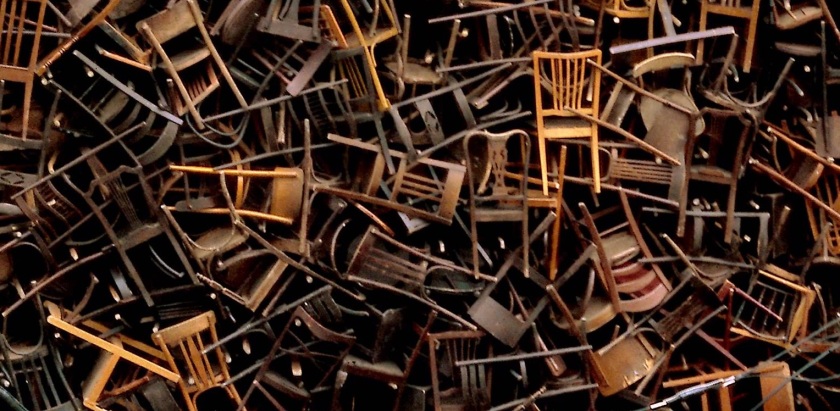
1.
A spotlight. Three bodies: beige, prone. They begin to vibrate, a self-excitation, each with a hand tucked suggestively beneath the pelvis. Then they begin to explore their small circle of light, like motile bacteria or nervous flatworms, around and over one another. Structure emerges. Layers. The bodies stack vertically, vibrations synchronised. Then from simple to complex, the bodies separating, settling into recognisable postural habits, sitting with legs folded to the side, vibrations diminishing.
What happens next, when we’re all sitting here together, like this, legs folded to the side? Caroline Meaden reaches out to William McBride, touches, comforts. Alice Dixon reaches out to Meaden. Then blackout.
2.
Lights up. Caroline Meaden, a solo figure, downstage right. She suggests listlessness and boredom, her arms swaying and head drooping. Whatever life she has is all in her finger. The index finger. The smartphone finger. The finger controls of the figure. The finger gives Meaden her initiative. Her languid body follows in its wake. She pours herself into the finger. Inevitably, the smartphone finger leads her into voyeurism: watching Alice Dixon and William McBride, upstage left, folded together.
3.
Later, McBride lies on his side facing the wall. Dixon and Meaden are on the other side of the room. They’re together in their own spotlight. They begin to move their hips, slow, as if in roadhouse neon, as if wreathed in cigarette smoke. McBride stirs. Then, the blade of a butterfly knife, he is suddenly upright. He mimes running, then mimes sprinting, straining to get across the stage to where the two women stand watching him, swinging their hips. At last he reaches them. Now what? He doesn’t know what to do. And they don’t know what to do. They all twiddle thumbs, stare into the distance, wait, occasionally whisper, nothing. Continue reading “Slown, Smallened & Son: This Is What’s Happening”










